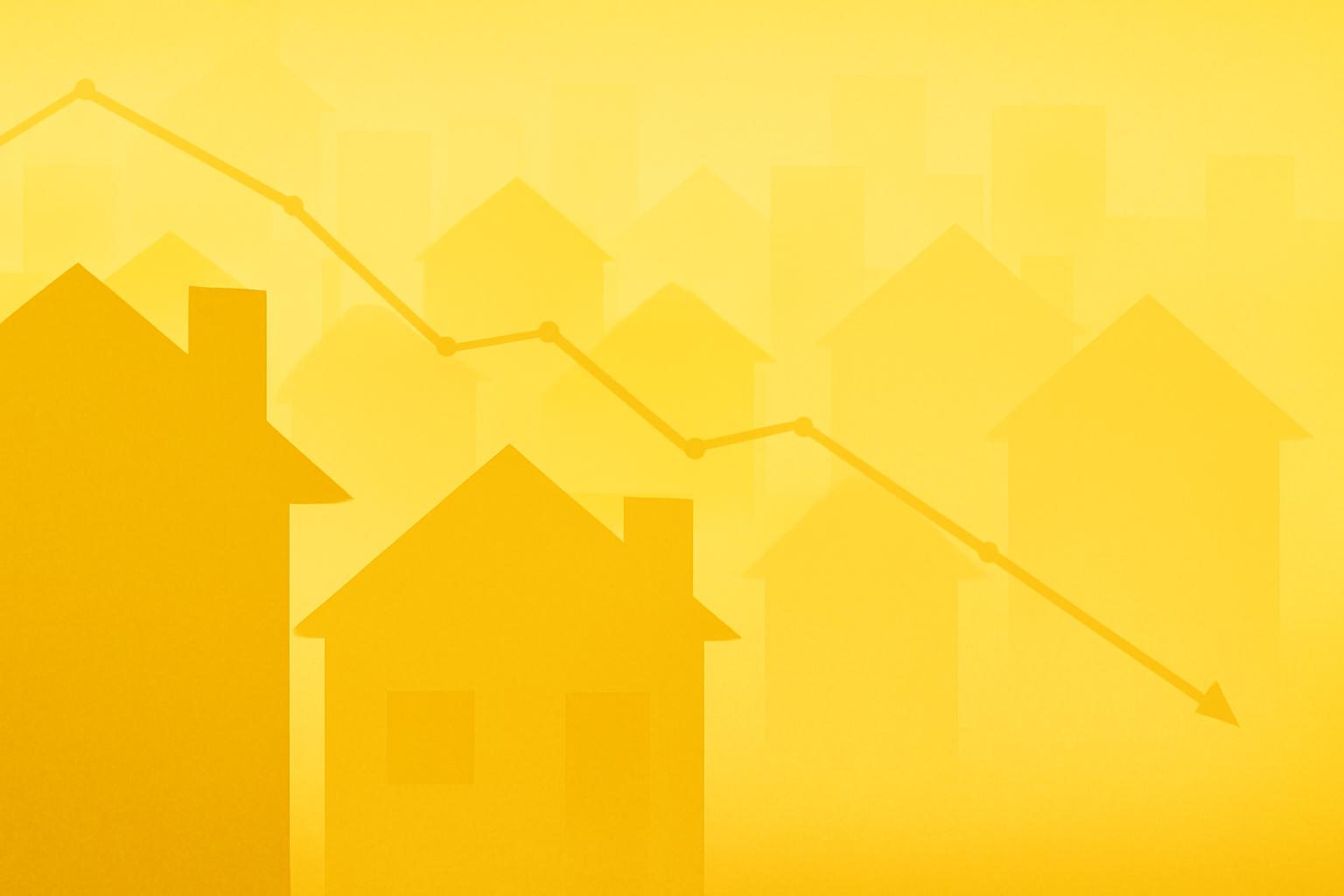Home Price Growth Lags Inflation, Eroding Real Housing Wealth
Home prices across the United States continue to rise but at a pace insufficient to outstrip inflation, resulting in a decline in homeowners’ real wealth for the fourth consecutive month. According to the S&P CoreLogic Case-Shiller U.S. National Home Price NSA Index, prices increased by only 1.5% in August compared to the same month last year, down slightly from July’s 1.6% annual gain. This modest price appreciation trails the current inflation rate of approximately 3%, effectively diminishing the purchasing power of housing assets. While home prices have not yet declined nationally, the deceleration signals a cooling housing market amid persistent economic headwinds.
Regional Disparities Highlight Uneven Market Dynamics
Most metropolitan markets tracked by the index experienced month-over-month price declines in August, with Chicago standing out as the sole exception to this trend by recording modest gains. Seasonal patterns typically bring price softness during this period, but the observed weakness notably exceeded normal seasonal fluctuations.
- New York led annual gains with a 6.1% increase.
- Chicago followed closely with a 5.9% rise.
- Cleveland posted a 4.7% gain.
- Conversely, Tampa saw a 3.3% decline year-over-year.
- Phoenix and Miami both experienced 1.7% drops.
- West Coast cities like San Francisco, Denver, and San Diego faced decreases ranging from 0.7% to 1.5%.
- Seattle’s prices turned slightly negative.
These patterns reflect a bifurcation in the housing market where locales that saw sharp pandemic-era price surges are now undergoing the largest corrections, while more affordable metropolitan areas with stable economies maintain relatively steadier price levels.
Mortgage Rates Continue to Suppress Demand
High mortgage rates remain a critical factor restraining buyer activity. Throughout the summer, rates hovered above 6.5%, limiting affordability even in the traditionally active summer homebuying season. Although rates have eased slightly—from just under 7% in early June to approximately 6.19% recently—the reduction has not been sufficient to significantly boost demand.
“Mortgage rates remaining above 6.5% continue to weigh on buyer demand, even during what should be the busy summer season,” said Nicholas Godec, head of fixed income tradables and commodities at S&P Dow Jones Indices. “The combination of high financing costs and prices that remain near record highs has limited transaction activity.”
The S&P Case-Shiller index is based on a three-month moving average, which means the figures reflect conditions during a period when mortgage rates were relatively elevated. Recent modest declines in rates may offer some relief moving forward.
Federal Housing Finance Agency Data Suggests Some Stabilization
Complementing the Case-Shiller data, the Federal Housing Finance Agency (FHFA) reported that home prices on conforming loans increased 2.3% year-over-year in August and 0.4% month-over-month, indicating tentative stabilization after several months of decline.
“This relative strength on a month-on-month basis reverses the recent weak trend and shows some stabilization in home prices across the US after several months of month-on-month declines,” said Eugenio Aleman, chief economist at Raymond James. “We may see some more stability in home price appreciation during the rest of the year as the effects of lower mortgage interest rates support increased housing activity.”
FinOracleAI — Market View
The latest housing data signals a market in transition. While home prices continue to rise nominally, their growth is insufficient to outpace inflation, eroding real homeowner equity. Elevated mortgage rates remain a significant drag on buyer demand and transaction volume, especially in markets that experienced outsized pandemic gains.
- Opportunities: Stabilizing mortgage rates could reignite buyer interest and support modest price appreciation.
- Risks: Continued inflationary pressures and high borrowing costs may prolong affordability challenges and suppress market activity.
- Regional corrections in overvalued markets may lead to a healthier, more sustainable housing market long-term.
- Affordable metros with stable economies may attract increased demand as buyers seek value.
Impact: The housing market faces a period of subdued growth with real equity erosion persisting, but potential stabilization in mortgage rates offers a cautiously optimistic outlook for the remainder of the year.













